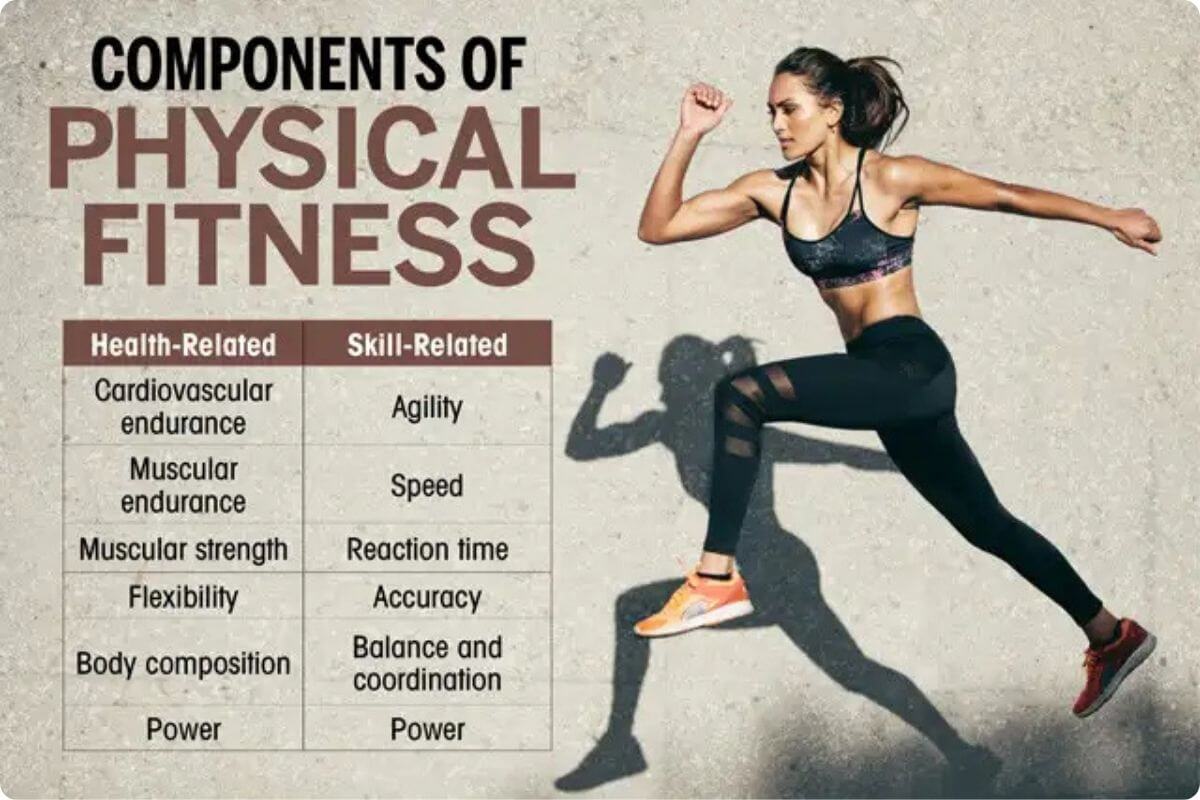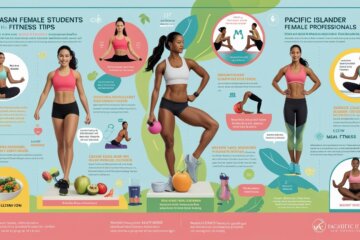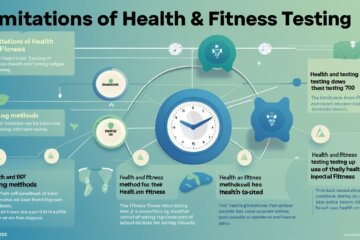There are five health-related physical fitness components. These include cardiovascular endurance, muscular strength, muscular endurance, flexibility, and body composition.
Understanding these components is vital for maintaining overall health and well-being. Cardiovascular endurance improves heart and lung function, aiding in daily activities and reducing disease risk. Muscular strength enhances the ability to perform tasks requiring force, such as lifting. Muscular endurance focuses on sustained activities, boosting stamina.
Flexibility ensures a range of motion in joints, preventing injuries and improving posture. Body composition measures the proportion of fat to lean mass, guiding fitness goals. Together, these components create a balanced fitness routine, promoting a healthier lifestyle. Recognizing and incorporating these elements can lead to better physical performance and longevity.
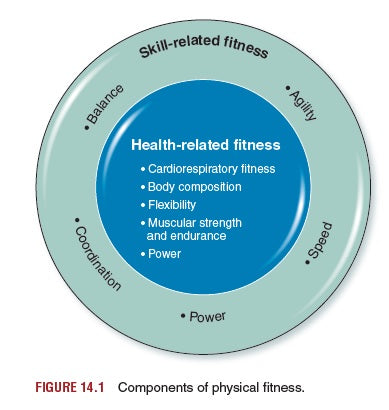
Credit: canada.humankinetics.com
Introduction To Physical Fitness Components
Understanding physical fitness components is key to improving health. These components help you stay active and fit. Knowing them helps you create a balanced workout plan.
The Importance Of A Balanced Fitness Regime
A balanced fitness regime covers all aspects of health. It ensures you are not missing any vital part of your fitness. A complete fitness plan includes various exercises.
A balanced fitness regime helps you improve overall health. It also reduces the risk of diseases. You feel more energetic and strong.
Defining Health-related Fitness
Health-related fitness has five main components. These components are:
- Cardiovascular Endurance
- Muscular Strength
- Muscular Endurance
- Flexibility
- Body Composition
Each component plays a vital role in your health. Let’s explore each one briefly:
| Component | Description |
|---|---|
| Cardiovascular Endurance | The ability of your heart and lungs to work together. |
| Muscular Strength | The amount of force your muscles can produce. |
| Muscular Endurance | How long your muscles can perform without getting tired. |
| Flexibility | The range of motion around your joints. |
| Body Composition | The ratio of fat to lean tissue in your body. |
Working on these components helps you stay fit and healthy. Each one is essential for overall well-being.
The Quintet Of Fitness: A Closer Look
Understanding physical fitness goes beyond exercising. It is about maintaining a balance of five essential components. These components ensure overall well-being and peak performance. Let’s dive into each of these components to grasp their significance.
A Snapshot Of The Five Components
Here are the five key components of health-related physical fitness:
| Component | Description |
|---|---|
| Cardiovascular Endurance | This measures the efficiency of your heart and lungs. It gauges how well they supply oxygen during prolonged physical activity. |
| Muscular Strength | This denotes the maximum force a muscle can exert in a single effort. It is crucial for lifting and pushing tasks. |
| Muscular Endurance | This measures a muscle’s ability to perform repeated actions without fatigue. It is vital for activities like running and cycling. |
| Flexibility | This shows the range of motion available in your joints. It helps prevent injuries and improves overall movement efficiency. |
| Body Composition | This assesses the ratio of fat to lean mass in your body. A healthy body composition enhances overall fitness and reduces health risks. |
Interconnected Nature Of Fitness Elements
These five components do not work in isolation. They are interconnected and contribute to overall fitness. Enhancing one aspect often benefits another.
For instance, improving cardiovascular endurance can also boost muscular endurance. A well-rounded fitness routine addresses all five components. This balance ensures a comprehensive approach to health.
Incorporating exercises that target each component will yield the best results. Consistency and variety are key to achieving optimal fitness. By focusing on these elements, you can improve your quality of life and physical capabilities.
Cardiovascular Endurance: The Heart Of Fitness
Cardiovascular endurance is the most crucial fitness component. It ensures the heart and lungs work efficiently. This allows you to exercise longer without getting tired. Improving cardiovascular endurance boosts overall health. Let’s explore its benefits and key exercises.
Benefits Of A Strong Cardiovascular System
A strong cardiovascular system offers numerous benefits:
- Improved Heart Health: Regular exercise strengthens the heart, reducing the risk of heart disease.
- Increased Lung Capacity: Enhanced lung function allows for better oxygen intake.
- Better Blood Circulation: Efficient circulation delivers oxygen and nutrients to muscles.
- Enhanced Stamina: You can perform activities longer without getting tired.
- Weight Management: Cardiovascular exercise helps in burning calories and maintaining a healthy weight.
- Mental Health: Reduces stress, anxiety, and depression levels.
Key Exercises For Improving Endurance
To boost cardiovascular endurance, try these exercises:
- Running: Run at a steady pace for at least 30 minutes.
- Cycling: Ride a bike outdoors or use a stationary bike.
- Swimming: Swim laps in a pool to engage multiple muscle groups.
- Jump Rope: Jumping rope is an excellent cardio workout.
- Brisk Walking: Walk quickly for a set distance or time.
- Rowing: Use a rowing machine to work both your upper and lower body.
Regular practice of these exercises will enhance your cardiovascular endurance. Aim for at least 150 minutes of moderate aerobic activity weekly. This simple routine can transform your heart health and overall fitness.
Muscular Strength And Endurance: Powering Through Life
Muscular strength and endurance are vital for daily activities. They help us perform tasks effortlessly. Building these components ensures a healthier life. Let’s delve into these essential fitness components.
Differentiating Strength And Endurance
Muscular strength refers to the maximum force a muscle can exert in a single effort. It helps in lifting heavy objects. It is essential for tasks like moving furniture or carrying groceries.
Muscular endurance is the ability of muscles to perform repeated actions over time. It is crucial for activities like running and cycling. It ensures you can perform tasks for longer periods without fatigue.
Effective Workouts For Muscular Fitness
To enhance muscular strength, focus on weightlifting exercises. These include:
- Bench Press
- Deadlifts
- Squats
For improving muscular endurance, incorporate repetitive exercises such as:
- Push-ups
- Planks
- Bodyweight Squats
Here is a simple workout plan to improve both:
| Exercise | Sets | Reps | Focus |
|---|---|---|---|
| Bench Press | 3 | 6-8 | Strength |
| Push-ups | 3 | 15-20 | Endurance |
| Deadlifts | 3 | 6-8 | Strength |
| Planks | 3 | 30-60 seconds | Endurance |
Consistency is key. Always warm up before starting any workout. Stay hydrated and listen to your body.
Flexibility: The Art Of Movement
Flexibility is essential for a healthy body. It allows you to move smoothly and easily. Good flexibility helps prevent injuries and improves your performance in physical activities. This blog section explores the importance of flexibility and how to enhance it.
The Role Of Flexibility In Daily Activities
Flexibility plays a crucial role in your everyday life. It helps you perform tasks with ease. Simple activities like bending to tie your shoes or reaching for something on a high shelf are easier with flexibility.
When your muscles and joints are flexible, you can move more freely. This reduces the risk of muscle strains and other injuries. Flexibility also helps in maintaining a good posture, which is vital for overall health.
| Activity | Impact of Flexibility |
|---|---|
| Bending | Reduces back pain |
| Stretching | Prevents muscle stiffness |
| Reaching | Enhances joint movement |
Best Practices For Increasing Flexibility
Improving flexibility takes time and consistency. Here are some best practices to follow:
- Warm-Up: Always start with a warm-up. This prepares your muscles for stretching.
- Stretch Regularly: Incorporate stretching exercises into your daily routine. Aim for at least 10 minutes a day.
- Hold Stretches: Hold each stretch for 15-30 seconds. This helps lengthen the muscles.
- Breathe Properly: Focus on deep breathing while stretching. It helps relax your muscles.
- Stay Hydrated: Drink plenty of water. Hydrated muscles are more flexible.
Yoga and pilates are excellent for enhancing flexibility. These exercises combine stretching with strength-building. They also help improve balance and coordination.
Remember to listen to your body. Never push yourself too hard. Flexibility improves gradually with regular practice.
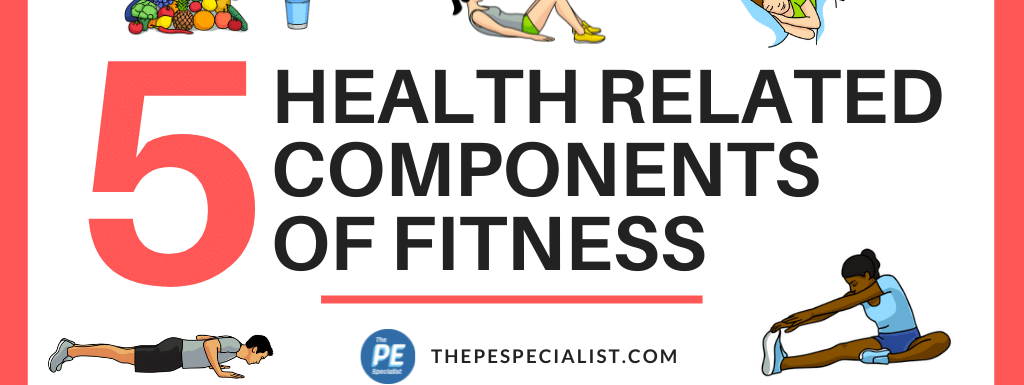
Credit: www.thepespecialist.com
Body Composition: The Fitness Foundation
Body composition is the core of physical fitness. It tells us about the fat and muscle in our bodies. Understanding this helps improve health and performance.
Understanding Body Fat And Muscle Mass
Body fat and muscle mass are two key elements of body composition. Body fat is the amount of fat in your body. Muscle mass is the weight of muscles in your body.
Body fat can be measured in percentages. Healthy ranges differ for men and women. For men, it is 10-20%. For women, it is 20-30%.
Muscle mass is important for strength and energy. More muscle mass helps burn more calories. This is good for weight control.
| Element | Healthy Range for Men | Healthy Range for Women |
|---|---|---|
| Body Fat | 10-20% | 20-30% |
Strategies For Optimizing Body Composition
Improving body composition involves increasing muscle mass and reducing body fat. Here are some strategies:
- Exercise regularly: Include both cardio and strength training.
- Eat a balanced diet: Consume lean proteins, vegetables, and fruits.
- Stay hydrated: Drink plenty of water every day.
- Get enough sleep: Aim for 7-9 hours of sleep each night.
Exercise should be varied and fun. This keeps you motivated. Strength training builds muscle. Cardio exercises like running or cycling burn fat.
Nutrition plays a big role. Eat whole foods and avoid processed foods. Balance your meals with proteins, carbs, and healthy fats.
Hydration is crucial. Water helps your body function well. Drink water before, during, and after exercise.
Sleep is often overlooked. Good sleep helps muscles recover and grow. It also keeps your hormones balanced.
By following these tips, you can improve your body composition. This leads to better health and fitness.
The Role Of Nutrition In Health-related Fitness
Nutrition plays a vital role in achieving health-related physical fitness. Proper nutrition fuels your body, helps in recovery, and enhances performance. Understanding what to eat can make a significant difference in your fitness journey.
Eating For Your Fitness Goals
Eating for your fitness goals involves consuming the right balance of nutrients. Each nutrient serves a unique purpose in your body. Whether your goal is to build muscle, lose weight, or improve endurance, your diet should reflect that.
- Muscle Building: Focus on high-protein foods like chicken, fish, and legumes.
- Weight Loss: Opt for low-calorie, nutrient-dense foods like vegetables and fruits.
- Endurance: Carbohydrates are essential. Choose whole grains, pasta, and rice.
Consistency in your diet is key. Plan your meals to align with your fitness objectives.
Nutrients Essential For Physical Health
Several nutrients are crucial for maintaining physical health. Each nutrient has a specific role to play.
| Nutrient | Role | Sources |
|---|---|---|
| Protein | Builds and repairs muscle tissues | Meat, dairy, beans |
| Carbohydrates | Provides energy | Bread, rice, pasta |
| Fats | Supports cell function | Avocados, nuts, oils |
| Vitamins | Regulate body processes | Fruits, vegetables |
| Minerals | Maintain strong bones | Meat, beans, nuts |
Stay hydrated. Water is essential for all bodily functions. Drink enough water daily to stay hydrated.
Each nutrient contributes to your overall fitness. Make sure to include a variety of foods in your diet. This ensures you get all the nutrients your body needs.
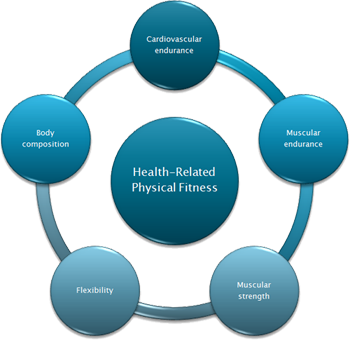
Credit: grants.hhp.uh.edu
Assessing Your Fitness Level
Understanding your fitness level is crucial for creating an effective workout plan. It involves evaluating various health-related fitness components. These components include cardiovascular endurance, muscular strength, muscular endurance, flexibility, and body composition.
Each component plays a significant role in overall health and well-being. Assessing these areas helps identify strengths and areas for improvement. Accurate assessment allows setting realistic and achievable fitness targets.
Standard Tests For Each Fitness Component
Different tests assess each fitness component. These tests provide a comprehensive view of your physical fitness. Let’s explore some of the standard tests:
- Cardiovascular Endurance: The VO2 max test measures the maximum oxygen uptake during intense exercise.
- Muscular Strength: The 1-rep max test evaluates the maximum weight you can lift for one repetition.
- Muscular Endurance: The sit-up test counts the maximum number of sit-ups performed in one minute.
- Flexibility: The sit-and-reach test measures the flexibility of your lower back and hamstrings.
- Body Composition: The BMI calculation determines your body fat percentage based on height and weight.
Setting Realistic Fitness Targets
Setting achievable fitness goals is essential for progress. Unrealistic goals can lead to frustration and burnout. Here’s how you can set realistic targets:
- Start Small: Begin with manageable goals to build confidence and motivation.
- Be Specific: Define clear and specific objectives. For example, aim to run 5 kilometers in 30 minutes.
- Track Progress: Keep a record of your progress. This helps in adjusting your goals as you improve.
- Stay Flexible: Be open to modifying your goals based on your progress and changing circumstances.
Remember, fitness is a journey. Celebrate small victories and stay consistent with your efforts.
Crafting A Balanced Workout Routine
Creating a balanced workout routine involves understanding the five components of health-related physical fitness. These components ensure overall health and fitness. Each component targets different aspects of physical well-being. Let’s explore how to incorporate all five components into a workout plan.
Incorporating All Five Components
To achieve a balanced workout, include exercises for each component:
- Cardiovascular Endurance: This boosts heart and lung capacity. Example: Running or cycling.
- Muscular Strength: This enhances muscle power. Example: Weightlifting.
- Muscular Endurance: This improves muscle stamina. Example: Bodyweight exercises like push-ups.
- Flexibility: This increases the range of motion. Example: Yoga or stretching routines.
- Body Composition: This is the ratio of fat to lean mass. Example: Combining cardio and strength training.
Sample Exercise Programs For Varied Levels
Here are sample exercise programs for different fitness levels:
| Fitness Level | Exercise Program |
|---|---|
| Beginner |
|
| Intermediate |
|
| Advanced |
|
Overcoming Common Barriers To Fitness
Maintaining physical fitness is crucial for a healthy life. Many people face common barriers that can hinder their fitness journey. Understanding and overcoming these barriers can lead to a more successful fitness routine.
Dealing With Motivation And Time Constraints
Motivation can be a big challenge for many. To stay motivated, set small, achievable goals. Celebrate each success. This helps keep the momentum going. Another way is to find a workout buddy. They can help keep you accountable and make workouts more fun.
Time constraints are another common barrier. Busy schedules can make it hard to find time for exercise. Try to integrate short workouts into your day. Even 10-minute workouts can be effective. Schedule your exercise like any other appointment. This makes it a non-negotiable part of your day.
Preventing And Managing Injuries
Injuries can derail your fitness plans. To prevent injuries, always start with a warm-up. This prepares your muscles for the workout. Use proper form during exercises. This reduces the risk of injury. Listen to your body. If something feels wrong, stop and rest.
If you do get injured, managing injuries properly is key. Follow the RICE method: Rest, Ice, Compression, and Elevation. Consult a healthcare professional for serious injuries. They can provide a proper diagnosis and treatment plan. This ensures you recover fully and safely return to your fitness routine.
Technological Tools And Resources
The rise of technology has revolutionized the way we approach physical fitness. With various technological tools and resources, tracking and improving health-related fitness components has never been easier. These tools provide valuable insights and support, helping you stay motivated and achieve your fitness goals. Below, we explore some of the most effective technological resources available.
Apps And Devices To Track Fitness Progress
Smartphones and wearable devices have become essential in monitoring fitness progress. Here are some popular apps and devices:
- Fitbit: Tracks your steps, heart rate, and sleep patterns. It provides a comprehensive overview of your daily activity.
- MyFitnessPal: A calorie counter and diet tracker. It helps you maintain a balanced diet and keep track of your nutritional intake.
- Apple Watch: Monitors your workouts, heart rate, and even offers guided breathing exercises. It integrates seamlessly with your iPhone.
- Strava: Ideal for runners and cyclists. It records your routes, distance, and pace, allowing you to compete with friends.
These apps and devices not only track your progress but also offer personalized recommendations. This ensures you stay on the right path to achieving your fitness goals.
Online Communities And Support
Joining online fitness communities can provide motivation and support. Here are some popular platforms:
- Reddit Fitness: A place to share experiences, ask questions, and find workout routines. It has a supportive and knowledgeable community.
- Bodybuilding.com Forums: Offers expert advice, workout plans, and nutrition tips. It’s a great resource for both beginners and advanced fitness enthusiasts.
- Fitocracy: A platform that turns fitness into a game. You earn points and badges for completing workouts, making fitness fun and engaging.
- Facebook Groups: Numerous groups dedicated to various fitness goals. They provide a sense of community and accountability.
Engaging with these communities can keep you motivated and informed. They offer a platform to share your journey and learn from others.
Conclusion: The Lifelong Journey Of Fitness
The journey to optimal health and fitness is not a sprint. It’s a lifelong journey. Understanding the various components of health-related physical fitness is crucial. This knowledge aids in maintaining a balanced and healthy life.
Maintaining Momentum In Health-related Fitness
To maintain momentum, consistency is key. Create a routine that includes all components of fitness: cardiovascular endurance, muscular strength, muscular endurance, flexibility, and body composition.
- Cardiovascular endurance: Engage in activities like running, cycling, or swimming.
- Muscular strength: Incorporate weight lifting or bodyweight exercises.
- Muscular endurance: Perform high-repetition strength training or circuit training.
- Flexibility: Practice stretching or yoga regularly.
- Body composition: Maintain a balanced diet and regular exercise.
Balancing these components helps in achieving overall fitness. Make small, sustainable changes to your routine. Set realistic goals and track your progress.
Continual Learning And Adaptation
Fitness is not static. It requires continual learning and adaptation. Stay updated with the latest fitness trends and research. Engage in diverse activities to keep your routine exciting. This prevents boredom and keeps you motivated.
Listen to your body. Adjust your workouts based on how you feel. It is important to avoid overtraining and injuries. Seek advice from fitness professionals when needed.
Joining fitness communities can provide support and inspiration. Share your journey and learn from others. Embrace new challenges and celebrate your achievements.
Remember, fitness is a personal journey. What works for one person may not work for another. Stay patient and persistent. Your efforts will pay off in the long run.
Frequently Asked Questions
Are There 11 Parts Of Physical Fitness?
Yes, there are 11 components of physical fitness. These include cardiovascular endurance, muscular strength, muscular endurance, flexibility, body composition, power, speed, agility, balance, coordination, and reaction time.
What Are The 10 Physical Fitness Components?
The 10 physical fitness components are cardiovascular endurance, muscular strength, muscular endurance, flexibility, body composition, agility, balance, power, reaction time, and coordination. These elements contribute to overall physical health and athletic performance.
How Many Types Of Physical Fitness Components Are There?
There are five main types of physical fitness components: cardiovascular endurance, muscular strength, muscular endurance, flexibility, and body composition. These components are essential for overall health and fitness. Focus on each to achieve a balanced and effective fitness routine.
What Are The 5 Components Of Health-related Fitness Quizlet?
The 5 components of health-related fitness are cardiovascular endurance, muscular strength, muscular endurance, flexibility, and body composition.
Conclusion
Understanding the components of health-related physical fitness is essential. It helps in creating effective workout plans. Focus on cardiorespiratory endurance, muscular strength, muscular endurance, flexibility, and body composition. Prioritize these components to improve overall health and fitness. Stay active and make informed choices for a healthier lifestyle.

“As the voice behind Radiant Glow Health, we are dedicated to being your ultimate wellness and vitality companion. Our mission is to inspire and guide you on your journey to a healthier and more vibrant life. Join us as we explore holistic health practices and empower you to radiate wellness from within.”
